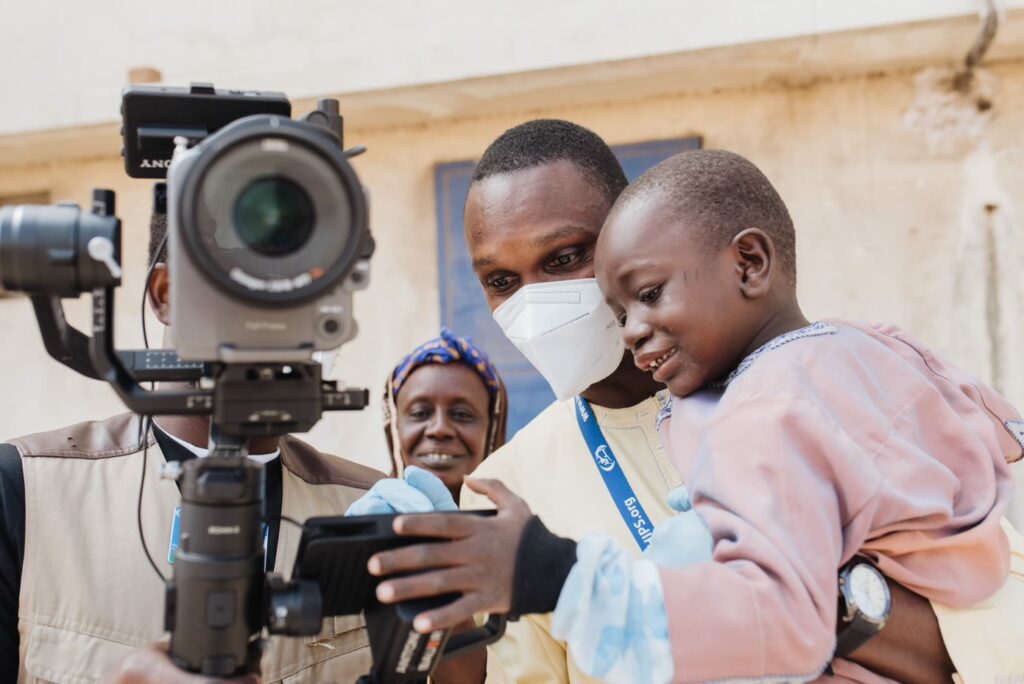Hamadou was 4 years old when he arrived on the Africa Mercy® hospital ship in Senegal.

By then, he had learned to deal with the physical limitations of his cleft lip, a gap in his upper lip that affected his ability to swallow and eat, as well as the way his teeth were growing. But the cleft lip continued to hold him back socially, even within her own family.
People in the Hamadou community drink their water from a large pot that they share with other members of their household, as well as any guests.
“People didn’t want to drink from the same pot of water as him,” said his mother Hawa.
While Hamadou was isolated in some way, his mother was always by his side giving him constant support.
On board
In 2019, Hamadou’s mother took him to Naves de Esperanza’s patient selection day. However, the pandemic delayed his opportunity for surgery.
Despite failing to find treatment for Hamadou in the years that followed, Hawa never gave up hope that his son would be cured. In 2022, the Africa Mercy hospital ship returned to the Port of Dakar to honor the commitment they had made to patients like Hamadou.
Hamadou was among the first group of patients to join. He was cared for by Lily Orcel, who was volunteering as a pediatric nurse for the first time with Naves de Esperanza.
“It was new for him, but it was also new for me,” she said with a smile. It took a little while “to realize that he’s been dealing with a treatable condition for so many years,” she said. In his home country of France, any child with a cleft lip would likely be treated at birth.
“We also have adult patients who come in with the same condition,” Lily explained about Naves de Esperanza. “Just knowing that we can have a big impact on their quality of life with a surgery that we would easily do at home, and that they’ve been waiting for that their whole life, it’s an honor to be a part of such a process.”
Just as Ships of Hope had an impact on Hamadou and his family, the boy left his own mark during his time aboard.
“Sweet Hamadou, he really was a memorable patient for me,” said American volunteer nurse Mary Toupin. “He was a 4-year-old with the courage of a 24-year-old… I take care of many 4-year-olds in the United States, and I can tell you that he was very exceptional.”
When it was time for Hamadou to go home, Mary and the other volunteers had already learned that this boy was a fighter.
“As a baby, it can be really difficult to eat, because the lip affects the ability to suck and drink milk,” she said. “The fact that he was already 4 years old and had lived his entire life with a cleft lip, means that he had overcome a lot.”

See hope
A few weeks after the surgery, the swelling on Hamadou’s face had gone down, and he was able to smile like never before in his life. When they left the hospital ship Africa Mercy, Hamadou and Hawa returned to their home, an eastern village in the Tambacounda region of Senegal.
The operation had come just in time to fulfill Hawa’s wish for Hamadou to enroll in school, unhindered by his condition. Hamadou “had a deep passion for technology” waiting to be fostered with the right education.
“You could see him light up the moment he saw the technology,” said Eugene Ampadu, a volunteer videographer from Ghana who was part of the team that shared Hamadou’s story. “I remember taking him as an assistant, giving him the headphones and he was quiet, watching how everything was going.”
For Eugene, that shared interest was one more way to help provide new hope for Hamadou.

“Patients are not only receiving healing through their physical conditions, but they are also being healed internally, restoring families and friends,” he said. “And in Hamadou’s case, they are being able to see hope in the various gifts and talents within them.”


